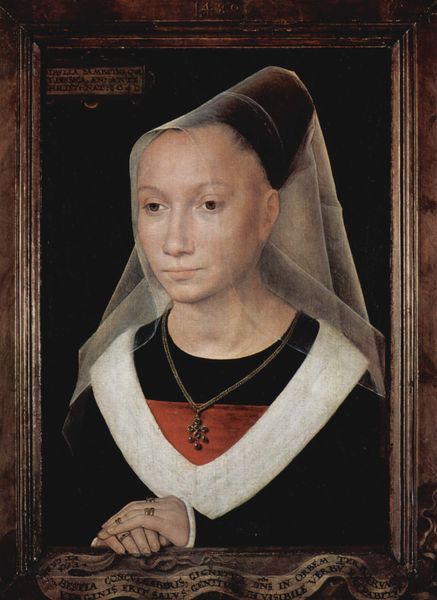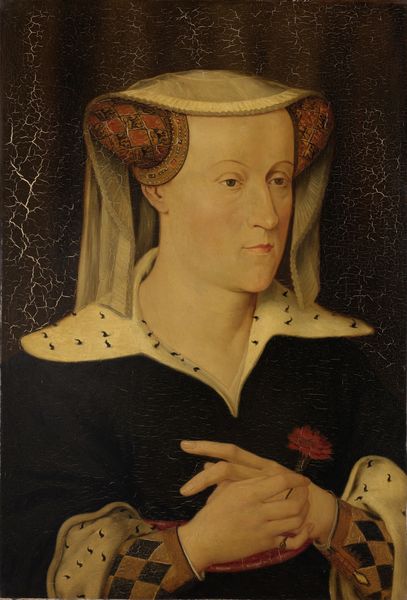
painting, oil-paint
#
portrait
#
painting
#
oil-paint
#
oil painting
#
history-painting
#
italian-renaissance
Copyright: Public domain
Curator: Standing before us is Piero di Cosimo’s "A Woman," painted circa 1510, now housed in the Palazzo Pitti in Florence. It’s an arresting example of Renaissance portraiture. Editor: My first impression is, well, almost ghostly. That intense side profile against the stark black ground, and the pale luminosity of the headscarf – it feels like she’s emerging from the darkness, or perhaps fading into it. Curator: Precisely. The stark contrast enhances the formal qualities of the piece. Notice how the artist directs our attention to the geometry of her profile – the precise line of her nose, the gentle curve of her jaw. The simple dark dress serves to focus the gaze upward. Editor: It's as if he's less interested in portraying her as an individual, and more in using her to create an archetype. Her face is beautiful, but very serene, even impassive. A touch of mystery goes a long way here. Is that a leaf she's holding? Curator: Indeed, a meticulously rendered leaf. Interpretations vary. It might symbolize virtue, or perhaps is simply an attribute suggesting her station. The symbolic weight in Renaissance portraiture shouldn't be ignored. Editor: Of course. It just adds another layer, doesn’t it? Though, on the other hand, maybe Cosimo included the leaf to draw your eyes downwards and pull away a little of the drama, a grounding feature of her connection with the Earth. I find my eyes dance over it and up to her golden head piece, back and forth. Curator: Interesting point. However, the tonal gradation within the yellow of the head covering also directs the viewers attention directly to the facial profile as it’s brightest right behind the profile edge. Piero di Cosimo's formal rendering is quite effective here. Editor: Exactly, there's so much room for your eye to discover its own experience in it, from drama to mundanity. That interplay between detail and shadow really breathes something fascinating and unique into what otherwise could feel flat, somehow. Curator: Ultimately, di Cosimo gives us a carefully calibrated study in form, enhanced by masterful use of oil paint, all orchestrated to focus attention on the ideal qualities of feminine beauty and the subtleties of light and shadow. Editor: And that's what makes it so striking. It feels at once contemporary and utterly timeless. You can step up to it and instantly let your own sense of wonder or mystery fill up the room.
Comments
No comments
Be the first to comment and join the conversation on the ultimate creative platform.













